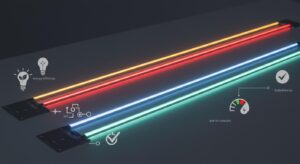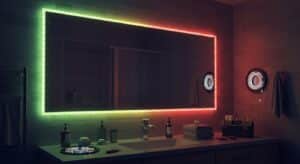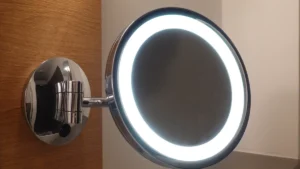
Imagine opening your cabinets to a bright, clean light thanks to cabinet lighting. LED bar lights make this happen. They are useful and stylish. These lights give your cabinets a modern and neat look while also helping you see better inside. New LED technology stops flickering, making tasks easier. Cooking or organizing becomes more fun with these cabinet lights. LED lights use very little energy, saving you money over time. In 2023, the LED cabinet light market passed $2 billion. This shows many people now choose this smart and eco-friendly option.
Key Takeaways
Using LED bar lights can cut energy costs by 75%, saving about $225 each year.
LED lights shine bright without flickering, helping you see better while cooking or organizing.
LEDs last longer than regular bulbs, so you replace them less often, saving time and money.
Benefits of LED Bar Lighting for Cabinet Lighting
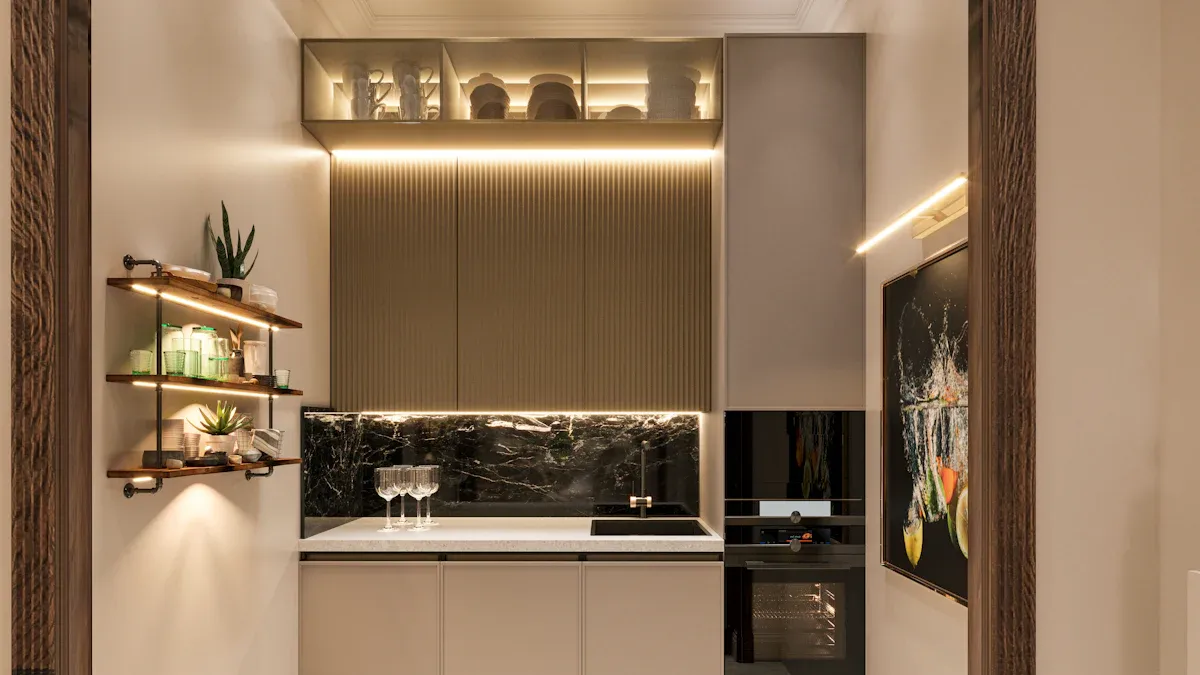
Energy Efficiency and Cost Savings
Using LED bar lighting for cabinets is a smart choice. LEDs use much less energy than regular bulbs. They can save up to 75% of the energy used by incandescent bulbs. Lighting makes up about 15% of your energy bill. By switching to LEDs, you could save around $225 each year.
Statistic Description | Value |
|---|---|
Energy use reduction by switching to LED bulbs | Up to 75% |
Average annual savings for households using LEDs | $225 |
Percentage of electricity use attributed to lighting | 15% |
Energy use reduction compared to incandescent bulbs | 90% less |
Reduction in carbon footprint per household | About 500 pounds/year |
LEDs also help the planet by cutting energy use. This lowers your carbon footprint. Some governments even give rebates for switching to LEDs. This makes upgrading your cabinet lights more affordable.
Enhanced Brightness and Visibility
LED bar lights make cabinets brighter and easier to use. Whether organizing spices or cooking, these lights help you see clearly. Light-colored, shiny surfaces reflect more light, needing fewer lumens. Dark, matte surfaces absorb light, so they need more lumens for the same brightness.
Surface Type | Reflectance Level | Effect on Brightness |
|---|---|---|
Light-colored, glossy | High | Enhances brightness, fewer lumens needed |
Dark-colored, matte | Low | Reduces brightness, more lumens needed |
For home kitchens, 250 lumens per foot work for general lighting. Task areas need 450 lumens. In commercial kitchens, 300 lumens are good for general areas, while 500 lumens are better for food prep. LED strip lights give steady, flicker-free light, making every cabinet corner visible.
Longevity and Durability
LEDs last much longer than regular bulbs. They can shine for tens of thousands of hours. Even after 50,000 hours, most LEDs still keep 70% of their brightness. This means fewer replacements, saving you time and effort.
Metric | Description |
|---|---|
L70 | Lifespan before light output drops to 70% |
L70B10C0.1 | After 50,000 hours, 70% brightness remains; only 0.1% may fail completely |
LM-80 Testing | Standardized method to evaluate LED lifetime over intervals up to 10,000 hours |
LEDs are tough and can handle shocks, vibrations, and extreme temperatures. They work well in busy kitchens or quiet pantries. No matter the setting, LED bar lights stay reliable.
Modern Aesthetic Appeal
LED bar lighting doesn’t just work well—it looks great too. These lights add a modern, stylish touch to your cabinets. Their slim design fits any style, from simple to traditional.
Cities like New York are leading in using modern lighting like LEDs. Homes use about 45% of these lights, while businesses use 55%. This shows how flexible and popular LEDs are. With dimmable options and adjustable colors, you can set the perfect mood for your space.
Tip: Use warm white LEDs for a cozy look or cool white for a modern feel. Your cabinets will look amazing either way.
Types of LED Bar Lights for Under Cabinet Lighting
Under-Cabinet LED Bars
Under-cabinet LED bars are great for modern kitchens. These lights are slim and fit neatly under cabinets. They give bright, steady light, helping you see better while cooking or organizing. Many have dimmable settings, so you can change the brightness as needed. They come in different sizes and finishes to match your cabinet style.
Tip: Use warm white LED bars for a cozy feel or cool white for a modern look.
Flexible LED Strips
Flexible LED strips are perfect for creative lighting needs. You can cut them to fit any cabinet size or shape. Their thin design keeps them hidden, so they don’t ruin your cabinet’s look. They also stick easily with adhesive backing.
Why Pick Flexible LED Strips?
They can be trimmed to fit any space.
You can dim them to adjust brightness.
Available in many colors for unique designs.
Use less energy and stay cool, making them safe.
Flexible LED strips aren’t just for cabinets. People also use them behind TVs or as accent lights in living rooms for a stylish touch.
Rigid LED Bars
Rigid LED bars are strong and long-lasting. Unlike flexible strips, they are made with sturdy materials, so they don’t wear out easily. They’re perfect for busy kitchens with lots of activity.
Feature | Rigid LED Light Bars | Flexible LED Strip Lights |
|---|---|---|
Construction | Hard and durable | Soft and bendable |
Flexibility | Cannot bend | Can bend and cut |
Installation | Easy with built-in channels | Sticks on with adhesive |
Rigid LED bars give steady light and are simple to set up. If you need tough, reliable lighting, these bars are a great choice.
Plug-In vs. Hardwired Options
When picking LED lights, decide between plug-in or hardwired types. Plug-in lights are easy to set up and don’t need electrical skills. They’re great for renters or quick upgrades. Hardwired lights look cleaner since there are no visible cords.
Safety Tips for Installation:
Choose products with UL or ETL safety labels.
Turn off power at the breaker before installing.
Don’t overload outlets to avoid electrical problems.
Hardwired lights are best for permanent setups, while plug-in ones are good for temporary use. Pick what works best for your space and needs.
How to Install LED Bar Lights for Cabinets
Tools and Materials Needed
Before starting, gather all the tools and materials. Having everything ready makes the job easier and faster. Here’s a simple list to help you:
LED bar lights (pick the type that fits your cabinets).
DMX control systems like decoders and controllers for advanced setups.
Lighting control sensors for hands-free use.
Connectors and wire for easy linking.
Single-color connectors for white or single-color LED strips.
RGB connectors for multi-color LED strips.
Tunable white connectors for adjustable white light.
Outdoor IP65 grip connectors for damp areas.
Extra wire for more flexibility.
DC accessories for plug-in power supplies.
Other items like adhesive tape, silicone sealant, and mounting clips.
Tip: Check your tools before starting. A screwdriver, measuring tape, and wire cutters are usually needed.
Step-by-Step Installation Guide
Installing LED bar lights is simpler than it seems. Follow these steps to light up your cabinets quickly:
Plan Your Layout
Decide where the lights will go. For under-cabinet lighting, place them near the front edge. This reduces shadows and improves visibility.Measure and Mark
Use a tape measure to mark where each light will go. This ensures even spacing and avoids overlapping light spots.Prepare the Surface
Clean the area where the lights will stick. Dust or grease can stop adhesive strips or clips from holding properly.Attach the Lights
For flexible LED strips, peel off the adhesive backing and press them firmly. For rigid LED bars, use screws or mounting clips to secure them.Connect the Wires
Use solderless connectors to link the lights to power. Single-color connectors work for white lights, while RGB connectors are for multi-color setups.Test the Lights
Plug in the power and turn on the lights. Check for flickering or uneven brightness. Adjust the lights if needed.Secure the Wires
Use cable clips or tape to keep wires neat and hidden. This makes your setup look clean and professional.
Pro Tip: For hardwired lights, hire an electrician for a safe connection.
Safety Tips for Installation
Safety is important when working with electrical parts. Follow these tips to stay safe and finish the job successfully:
Turn Off the Power
Always turn off the power at the breaker before working with wires.Use the Right Tools
Only use tools made for electrical work. Avoid using unsafe or makeshift tools.Space Lights Evenly
Place lights evenly to avoid overlapping beams. This looks better and reduces eye strain.Check Safety Labels
Pick products with UL or ETL safety labels. These ensure the lights meet safety standards.Don’t Overload Circuits
Avoid plugging too many lights into one outlet. Overloading can cause overheating and other problems.
Note: Properly placed under-cabinet lights improve visibility and reduce eye strain. Take your time to get it right!
Design and Placement Tips for Cabinet Lighting
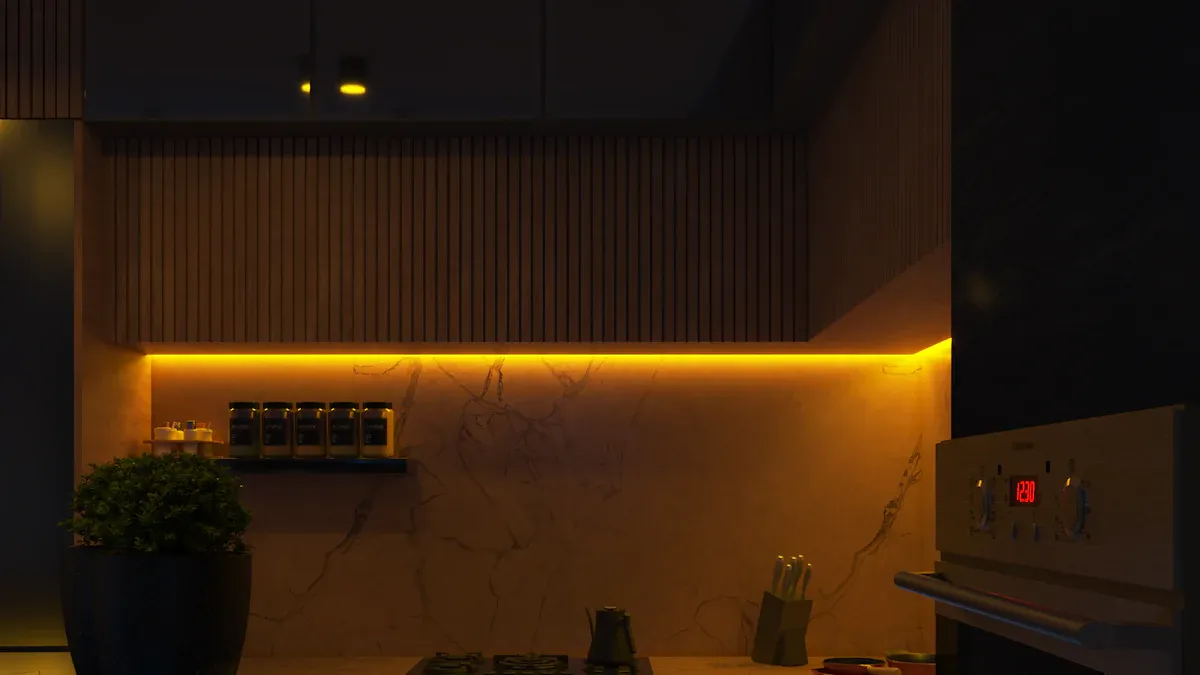
Picking the Best Color Temperature
The color of your cabinet light changes the room’s feel. Warm white light (2700K–3500K) gives a cozy and welcoming vibe. It works well with cabinets in red, orange, or yellow tones. Cool white light (4500K–6500K) is great for modern kitchens. It makes blue, green, or white cabinets look clean and sharp.
Use Case | Suggested Color Temperature (CCT) |
|---|---|
General Room Lighting | 2700K – 3000K |
Bathroom Lighting | 3400K – 4000K |
Kitchen Cabinet Colors | Warm white for warm tones; cool white for cool tones |
Also, check the CRI (Color Rendering Index). A CRI of 90 or higher makes colors look bright and real. Brightness is important too—more lumens mean brighter light. Choose what fits your needs.
Best Placement for Balanced Lighting
Where you put your lights matters a lot. Experts suggest placing under-cabinet lights near the front edge. This helps reduce shadows and makes tasks like chopping easier. It also spreads light evenly, which lowers eye strain and improves workspace function.
Pro Tip: For tall cabinets, add lights inside. This brightens every shelf and helps you find items in dark corners.
Matching Lights to Cabinet Style
Your lights should match your cabinet design. Warm white light suits traditional cabinets, giving them a classic look. Cool white light works well with modern cabinets, making them look sleek and simple. Adjustable LED strips can add fun colors and match your cabinet hardware.
Lighting isn’t just useful—it’s part of your room’s design. Use it to create a mood and show off your cabinets. Whether you want a cozy or modern look, the right lighting completes the space.
Cost and Energy Savings with LED Bar Lights
Initial Investment vs. Long-Term Savings
Buying LED bar lights costs more at first. But they save money later. Regular lights are cheaper to install but use more energy. They also need replacing often. For example, LED lights cost 77,000 PKR more upfront than regular ones. Yet, yearly electricity costs are much lower—62,753 PKR for LEDs versus 118,323 PKR for regular lights. This means you save over 55,000 PKR every year.
The best part? You get back your LED investment in just 1.4 years. After that, it’s all savings. You’ll spend less on repairs and replacements. This makes LEDs a smart choice for lighting your cabinets.
Comparing LED Bars to Traditional Lighting
LED bar lights are better than regular lights in many ways. They use less energy, last longer, and shine brighter. Regular lights, like incandescent bulbs, waste energy as heat. LEDs turn most energy into light, making them more efficient.
Here’s the difference: LEDs use up to 90% less energy than incandescent bulbs. They last tens of thousands of hours, while regular bulbs burn out quickly. This means fewer replacements and less trouble for you. Plus, LEDs come in many designs and brightness levels. You can pick what fits your style and needs.
Reducing Energy Consumption with LED Technology
LED technology helps save energy. Switching to LEDs can cut energy use by up to 75%. This lowers your electricity bills and helps the planet. If everyone switched, it would save lots of energy and reduce pollution.
LEDs work great for cabinet lighting. They give bright, focused light without wasting energy. Whether organizing or cooking, LEDs provide the perfect light. They also produce less heat, making them safer and cooler for small spaces.
Tip: Use dimmers or motion sensors with your LED lights. This saves even more energy and adds convenience!
Maintenance and Troubleshooting for LED Cabinet Lighting
Cleaning and Maintaining LED Bars
Clean your LED bars to keep them bright and lasting longer. Kitchens can cause dust and grease to collect on the lights. Use a soft, lint-free cloth to clean them. Slightly dampen the cloth with water or mild cleaner. Gently wipe the lights, avoiding electrical parts.
For tough stains, rubbing alcohol can help. Don’t use harsh chemicals or rough materials. These can scratch or damage the lights. Clean your lights about once a month. This keeps them looking good and working well.
Tip: Always turn off the power before cleaning to stay safe.
Replacing Components
Sometimes, parts of your LED lights may need replacing. If a light doesn’t work, check the power supply first. Loose wires or a bad adapter might be the problem. Replace the adapter if needed.
If strips or bars dim or flicker, check for wear. Replace only the broken section instead of the whole setup. Use connectors that match your system. Always check voltage and wattage to avoid mismatches.
Pro Tip: Keep extra connectors and wires ready for quick repairs.
Fixing Common Issues
Flickering or uneven light can be annoying. Flickering often happens because of loose wires or a bad power supply. Tighten the wires or replace the adapter to fix it.
Uneven light might mean the strip isn’t placed correctly. Adjust it to make sure it sticks evenly. If the problem continues, check for damaged parts and replace them.
Note: If you can’t fix the issue, call a professional to avoid more damage.
LED lights for cabinets can transform your home completely. They save energy, look modern, and work really well. Using LED strip lights helps you save money and adds style. Don’t wait any longer! Upgrade your cabinets with LED lights now for a mix of usefulness and beauty.
FAQ
1. Can I install LED bar lights without professional help?
Yes, you can! Most LED bar lights come with easy-to-follow instructions. Use plug-in options for a quick and hassle-free setup.
2. How do I choose the right brightness for my cabinets?
Pick brightness based on your needs. For general lighting, 250 lumens per foot works well. Task areas need brighter lights, around 450 lumens.
3. Are LED bar lights safe for kitchen use?
Absolutely! LED lights produce minimal heat and are energy-efficient. Choose models with safety certifications like UL or ETL for added peace of mind.
Tip: Always clean and maintain your LED lights to keep them working efficiently and looking great!
See Also
Illuminate Your Kitchen Cabinets With LED Strip Lighting
Edge-Lit LED Bars Perfect For Signage And Lightboxes
Enhancing Sign Board Illumination With LED Modules
Setting Up LED Light Bars For Lightbox Displays
Understanding The Functionality Of LED Light Bars In Lightboxes
